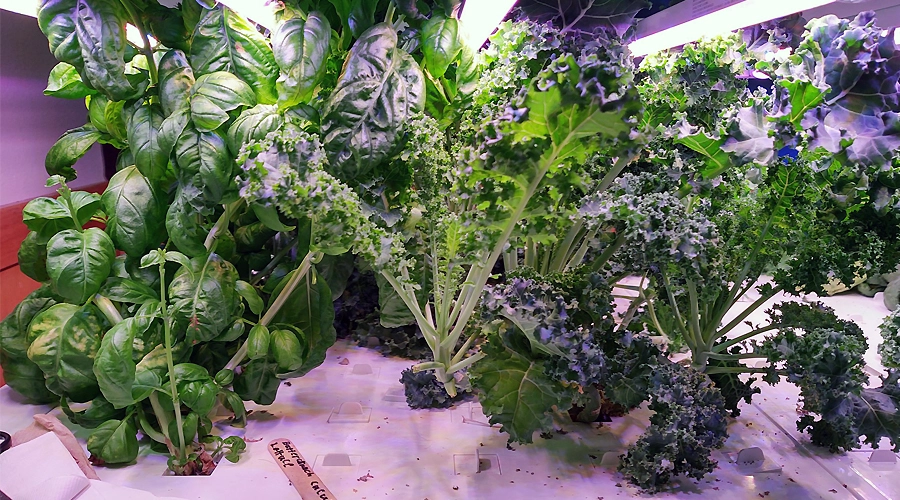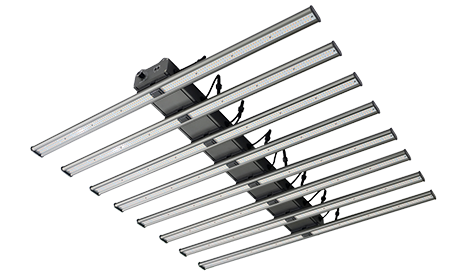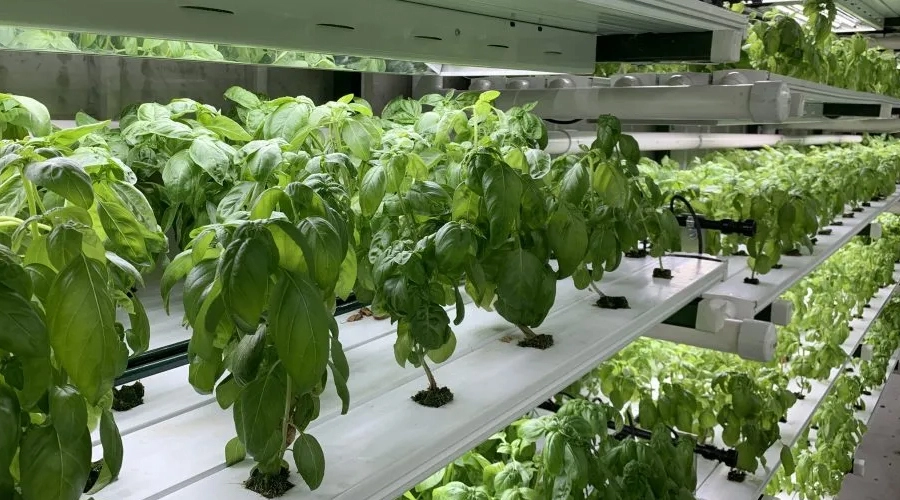Hydroponics is an excellent indoor planting method. It can be challenging, yet enjoyable and highly beneficial. You may encounter various problems in hydroponics, but you can learn a lot from books, articles, and tutorial videos.
However, one of the best ways is to learn from our mistakes and acquire the skills to avoid or successfully address these problems. I’ve compiled this article to introduce the most common issues you might encounter.
I hope this post can help you avoid mistakes and equip you with the knowledge to handle challenges successfully.
Hydroponics System Leaks
System leaks can lead to nutrient loss, affecting plant growth. There are various reasons for system leaks:
- Leaks can occur at any connection point or valve in the system.
- Blockages in the system can also cause leaks, such as root blockages in NFT systems, leading to water backflow and overflow. If the reservoir in your system can’t contain all the nutrient solutions, leakage may occur.
- Power outages or pump failures can result in water backflow and overflow in the reservoir.
Soluzione
Test the system before planting any plants. Tighten all valves and ensure all connections are securely fastened.
Regularly check your system for issues, such as excessive root growth or clogs in drain pipes or outlets.
Ensure the chosen reservoir can accommodate all the nutrient solutions in the system, not just its capacity during system use.
Pests
Plants can suffer from poor growth or even death due to attacks by pathogens, pests, and other invaders.
List of pests: Fungus gnats, Aphids, Whiteflies, Thrips, Spider mites.
If you’re practicing indoor hydroponics, the chances of battling pests are much lower compared to outdoor cultivation. However, if you do encounter pests, it’s even worse because it means they’re right in your house!
Soluzione
Sticky traps, apple cider vinegar, soapy water, and even electronic insect traps can help reduce the severity of pest infestations.
However, sometimes pest problems can escalate to the point where you have to shut down the garden and thoroughly disinfect it. It’s unfortunate, but it does happen occasionally.
If you’re moving outdoor plants indoors in the fall, be extremely cautious during the transition. This is a major pathway for introducing pests into your home.
It’s best to keep indoor plants indoors and outdoor plants outdoors to avoid pest problems with hydroponics.
Algae
I’m sure any gardener in the process of hydroponic growth has dealt with algae at some point.
Hydroponic growth provides an ideal environment for algae because it engages in the algae trio: Water + Light + Nutrients = Algae growth.
Soluzione
We can’t remove water from the equation. Nutrients are crucial, but it’s essential to use them at the right time and in the right amounts. This leaves us with light.
So, we need to ensure that unnecessary light doesn’t shine into the water in the planting container. This is a method to reduce light leakage that can lead to excessive algae growth.
Root Rot
Root rot: Root rot occurs due to factors like root hypoxia, nutrient excess, poor water quality, etc. It leads to the decay of roots, impacting the plant’s ability to absorb water and nutrients.
Poor root growth: Insufficient oxygen, nutrient deficiency, poor water quality, etc., can result in poor root growth, affecting the plant’s ability to absorb water and nutrients.
If you observe any brown, sticky, or foul-smelling roots, the plant is likely suffering from root rot.
Soluzione
Root rot is typically caused by fungi from the Phytophthora genus and usually becomes apparent in the later stages of plant development. Don’t just focus on the plant; don’t forget about its roots!
- Remove the affected pods and rinse the impacted roots with clean water.
- Trim the affected roots using clean pruning shears.
- Trim dead or withered leaves.
- Clean the planting container and add fresh nutrients.
- Ensure the water pump is functioning properly and not clogged by roots.
Not Monitoring the Water Quality
Poor water quality: Impurities and pathogens in the water can lead to poor plant growth or even death.
High water temperature: Elevated water temperature affects plant photosynthesis and respiration, leading to poor growth.
Low water temperature: Low water temperature hinders root growth, resulting in poor overall plant growth.
Soluzione
Use EC meters and pH meters to conduct weekly water quality tests on your hydroponic system!
If you’re just getting started in the wonderful world of indoor hydroponics, begin with the right foundation – regularly test your water.
Not Monitoring and Adjusting the pH Level
The pH level of the nutrient solution is one of the most critical factors in hydroponic cultivation.
Due to factors such as temperature, the rate of nutrient absorption by plants, the presence of diseases, excessive evaporation, etc., the pH level can undergo significant changes within hours or days.
Soluzione
When practicing hydroponics, you must monitor the pH of the nutrient solution.
In a new system or after recent changes, you may need to test and adjust the pH daily.
In a stable system, you can reduce testing to once or twice a week.
As you gain experience in hydroponic cultivation, you will learn the factors that can impact pH levels and the appropriate testing frequency.
Overcrowding
When you have your first indoor smart garden, there’s an inexplicable excitement. You see the growth potential hidden in those cute little holes, and you want to fill them all!
If you randomly fill every hole with any plant you fancy, you’ll run into a disaster: some things grow tall, some bush out, some stay low, and some harvest faster than others.
You need to pause and think about what you want to grow.
Soluzione
A good general rule is not to plant in every single hole. If you’re not using one, cover it up!
Not utilizing all available holes is a preventive measure against future overcrowding.
Perhaps you feel hesitant about wasting too much space in the seedling stage. But you’ll be thankful you didn’t overcrowd, especially when plants grow densely, particularly in the case of tomatoes and strawberries.
Incorrect Nutrient Composition
Nutrient deficiency: Insufficient essential nutrients for plant growth can lead to poor development, yellowing leaves, and leaf drop.
Nutrient excess: Excessive nutrient levels can hinder root growth, cause leaf deformation, and even lead to plant death.
Nutrient imbalance: Unequal proportions of nutrients can result in poor plant growth.
Soluzione
Ensure you purchase nutrients specifically designed for hydroponics.
Adding nutrients not suitable for hydroponic systems may burn plants, be overly diluted, or even damage the water pump!
Using high-quality nutrient solutions like Aerogarden nutrients, Rise Garden’s nutrients, Cal-Mag nutrients, or others can provide ample nutrition for plants. I won’t recommend which one is the best – I’ll leave that decision to you.
Pump or Pipe Blockage or Damage
A damaged or blocked water pump can disrupt nutrient circulation in most systems, affecting plant growth.
For aeroponic systems, nozzle blockages are common over time. However, Wick and DWC systems usually don’t face this issue.
This problem is relatively easy to solve. In most cases, the pump gets clogged by roots, which is why some people frequently trim roots.
I haven’t tried this myself, and in over a year of hydroponics, my water pump has only been blocked by roots once. So, whether to trim roots depends on your own experience.
Soluzione
If you regularly check the health of your roots, the chances of your pump getting clogged by roots will be significantly reduced.
Using the wrong nutrients can also clog your pump. Pipes are usually unaffected by roots, but algae or growing sludge may entangle them.
Consider purchasing pumps or air pumps with built-in alarms; if a blockage occurs, the alarm will sound.
Regular cleaning and the use of convenient pipe cleaners should help prevent this issue.
Choosing the Wrong Plants
I believe we all have the desire to try growing every type of crop.
However, some plants thrive in hydroponic: leafy greens, herbs, peppers, strawberries, and kale. While others may struggle: carrots, cauliflower, pumpkins.
Soluzione
Plants like herbs, leafy greens, tomatoes, peppers, and strawberries are well-suited for hydroponics. However, when it comes to tomatoes, ensure you choose a determinate or bush variety.
If you’re new to hydroponics, start with leafy greens. Once you’ve learned some techniques, then try pushing some boundaries.
Lack of Cleaning
Failure to clean a hydroponic system can lead to various issues such as root rot, affecting plant health and growth.
Part of the cleaning process is to prevent algae, pipe blockages, diseases, and pests from taking root in the system.
While some hydroponic systems are designed to promote beneficial bacteria growth, I believe, for most home hydroponic setups, it’s best to avoid pathogens by regularly cleaning the system and the surrounding area.
Soluzione
Keep the area around your grow tower or planting cabinet clean and organized.
Every 2-3 weeks, drain the system, rinse the growing medium and roots with water, and clean the reservoir, water pump, and pipes.
Plant Diseases
When sickness befalls hydroponic plants, it can be a sad day.
Gray mold: Caused by excessive humidity, it can be regulated by introducing a small oscillating fan.
Powdery mildew: Almost every gardener’s nightmare, is caused by low light, high humidity, and low temperatures. Try brightening the lights (if possible), prune leaves to create space and promote airflow, and an oscillating fan can also help.
Wilt disease: There are many types of wilt diseases, often afflicting eggplants, tomatoes, and peppers. If you start seeing lower leaves curling and wilting, you’ll know it’s struck. Unfortunately, the best course of action is to remove the affected plant, disinfect it, and restart the system.
Soluzione
Prevention is key: Maintain system cleanliness, regularly disinfect it, and avoid the breeding of pathogens.
Early detection, early treatment: Once you notice plant diseases, take prompt measures for treatment.
Use fungicides: Common fungicides include potassium permanganate, penicillin, streptomycin, etc. (for bacterial diseases).
Buying Cheap or Incorrect Grow Lights
I once had a friend who shared his mistakes in indoor grow lights. He bought cheap lights that couldn’t meet the requirements or the wrong type of lights, resulting in low yields of fruits and vegetables.
Without adequate and correct lighting, the system’s performance can be very disappointing. Insufficient light affects plant photosynthesis, leading to poor growth.
Soluzione
For most people, I strongly recommend using LED grow lights.
When buying LED grow lights, don’t go for the cheapest option. Do some research, and purchase high-quality lights with the right wavelength and sufficient quantity to generate the appropriate light for your system.
Make sure to buy enough grow lights for your system. A good rule of thumb is to calculate the square footage of the growing area’s ceiling and then multiply it by 65.
Example:
Growing area is 4 feet x 6 feet.
Total area = 24 square feet.
24 square feet x 65 = 1560 watts.
For optimal growth, you need approximately 1560 watts of lighting for this area. This is a general rule of thumb that I follow.
Low Humidity
Low humidity affects plant transpiration, leading to poor growth.
Soluzione
Increase humidity: Spray water around the plants or place water bowls or humidifiers near them to add moisture to the air.
Choose suitable plants: For simple home cultivation, choose plants that don’t require high humidity.
Improve ventilation: Place hydroponic plants in well-ventilated areas. Trim dead branches and leaves to enhance ventilation.
Conclusione
In the process of using hydroponics to grow plants, I have indeed gone through numerous trials and errors.
Many of the problems I encountered could have been avoided with proper planning and attention to detail.
I would love to hear your thoughts if you encounter any issues or have any tips to share while using hydroponics for plant cultivation. I hope this article helps you avoid the challenges I faced when I first started. Feel free to leave a comment below or use the contact form.
Jayes
In qualità di responsabile del marketing digitale presso AUXGROW, Jayes unisce la passione per i sistemi idroponici e l'esperienza nelle luci di coltivazione a LED. Con esperienza pratica e profonda comprensione, Jayes ti guida attraverso il mondo della coltivazione sostenibile.






